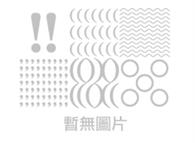
13
0
0
0
0
Industrial competitiveness and design evolution
- 其他作者:
- 其他題名:
- Evolutionary economics and social complexity science ;
- 出版: Tokyo : Springer Japan :Imprint: Springer
- 叢書名: Evolutionary economics and social complexity science,volume 12
- 主題: Industrial design--Economic aspects. , Industrial Organization. , Trade. , Operations Management. , Innovation/Technology Management.
- ISBN: 9784431551454 (electronic bk.) 、 9784431551447 (paper)
-
FIND@SFXID:
 CGU
CGU
- 資料類型: 電子書
- 內容註: 1 Evolution of Firms and Industries -- 2 Design-based Comparative Advantage - Evolution of Capabilities and Architectures -- 3 Evolution of Organizational Capabilities in Manufacturing - A Case of Toyota -- 4 2 Ricardian Comparative Advantage and Capability-Building Compertition -- 5 Design Cost and Choices and Architectures and Coordination Mechanisms -- 6 A 2-Stage Design Process Model and Lead Time Competitiveness -- 7 Evolution of Product Architecture - A case of Complex Office Machines -- 8 The Long-tail of the Automotive Industry Lifecycle -- 9 Industry Lifecycle in Game Software Industry -- 10 Product Variety for Creating Effective Demands -- 11 Productivity Increase and Demand Creation at All Levels.
- 摘要註: This book integrates the concept of design into the existing framework of industrial performance, international trade and comparative advantage in trade and industrial phenomena, which increasingly have been affected by design characteristics of tradable goods. Design, capability and their evolution are introduced into current theories of trade to explain the reality of international trade in the early twenty-first century and the possibility of design-based comparative advantage is explored. Toward that end, the concepts of design, architecture, organizational capability and productivity are introduced, as are their interactions and evolution. The author starts from the fact that firms' selection of design locations precedes that of production locations and that a new product's initial production location is usually the same as its design location. In other words, design matters in explaining today's trade phenomena. Thus, this book analyzes product design and its evolution in the context of the comparative advantage theory. The author argues that the concept of Ricardo's comparative advantage must be reinterpreted in a more dynamic way than in the past, with changing labor input coefficients treated as variables and driven by international capability-building competition between factories. Some of the many topics dealt with in this volume include a capability-architecture view of industrial comparative advantage, a design-based view of manufacturing, the evolution of manufacturing capabilities, Ricardian comparative advantage with changing labor input coefficients, comparative design cost and selection of design locations and a design process model behind comparative design cost. In this way, the behaviors of factories, product development projects, firms, industries and national economies in today's global competition are described and analyzed in the most realistic way.
-
讀者標籤:
- 系統號: 005437609 | 機讀編目格式
館藏資訊
